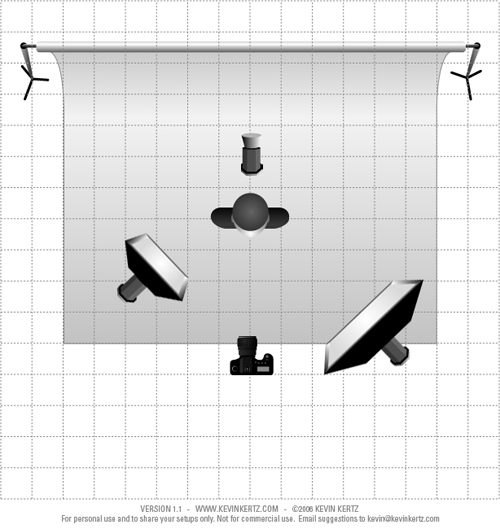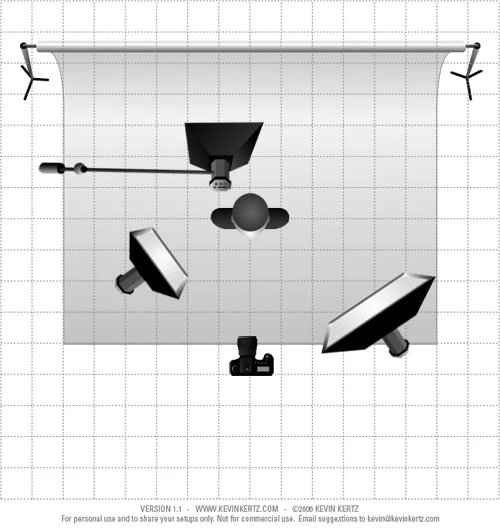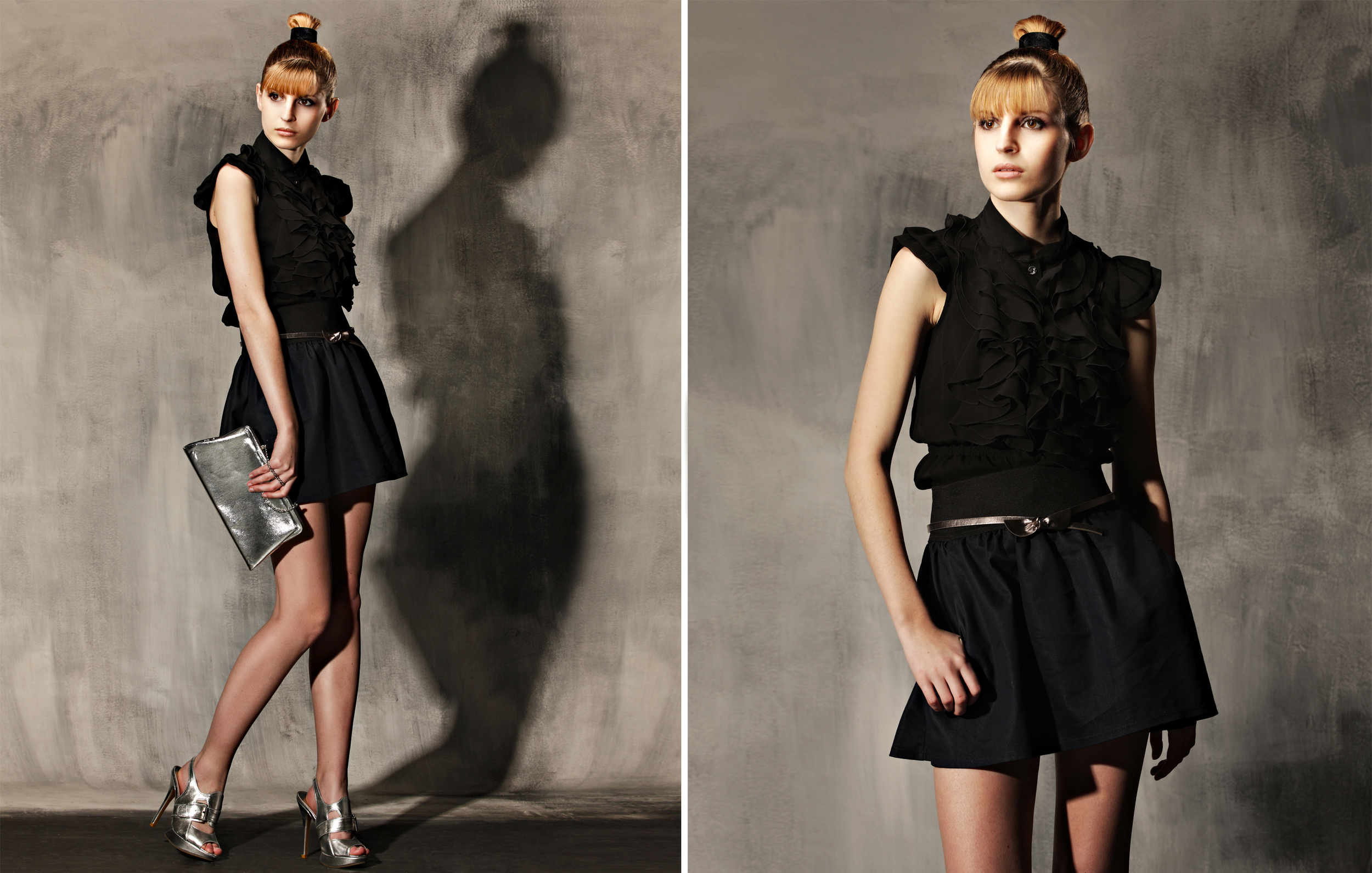If you are serious about your photography and want to book an outstanding model, your best bet is to go through an agency. Not only do most agency models fit the general requirements of the fashion industry as excellent clothes hangers, they also know how to pose and will certainly help you create better pictures than you would have otherwise and in a much shorter period of time. You may have seen freelance models charging rates over $100 per hour and may think that agencies must be so much more expensive, but they are not. There are several factors that come into play when booking an agency model, so I will try to explain them as easily and accurately as possible.
In General
Whenever you book a model through an agency, it's subject to negotiation. While agencies have somewhat fixed rates for their models, they will vary them depending on the photographer and the model's schedule. In addition, you will have to pay for extras such as commercial usage or travel time.
Base Rate
The base rate for an agency model can vary between $0 and easily run into the thousands of dollars per hour. If you are an approved photographer with an agency, it is very likely that they will let you shoot their new models for free and that you will receive a pretty good discount on their experienced models as long as you are not doing a commercial photo shoot. Otherwise, the average rate for an agency model is between $50 and $250 per hour (depending on the market and the agency) plus 20% agency fee. Naturally you will pay more for a model in a market like NYC who is signed with one of the better agencies. Some agencies will also charge more if the models has to be on set before 9 am or after 5 or 6pm.
Day Rate / Half Day Rate
Day rates are charged when you book a model for a whole day, which is usually 9 am till 5.30 pm (including at least a 30 minute break). Half day rates are charged for any four hours within that time-frame. Some agencies are strict on half days, as they try to maybe book another half day for the model. Other agencies are fine with any four hour block between 9 am and 5.30pm.
Travel Time
Unless you are planning to do the shoot close to where the agency is located, you will likely be charged for travel time. In general, travel time is billed as half of the base rate. Close in this respect is relative. Some agencies in NYC will not charge travel time for travel to Queens, while others will consider everything outside of their ZIP Code as travel.
Hair, Make-Up, Styling, Preparation
Most likely you will pay the full rate as soon as the model arrives on your set until she leaves your set. If the MUA needs three hours for the make-up, you will pay the full base rate for those three hours. Hence, a good and fast make-up stylist will cost more than a newbie, but may save you money in the long run. The same applies to hair stylists, wardrobe stylists, and anybody else who works with the model before, during, or after you shoot.
Usage Fees
Professional photographers charge usage and license fees for their images and so do agencies. These fees very largely depending on a whole lot of factors, such as the agency, the market, the model, and of course where and how the image will be used. Naturally, the usage fee for a pamphlet for medium-sized company will be significantly lower than the usage fee for an international ad campaign. If you plan to use the pictures for an ad campaign, most agencies will also expect you to inform them about the nature of the product and/or the brand. There is usually no usage fee if you just want to use the pictures for your Portfolio.
Other Terms and Conditions
Alright, once you negotiated all of the above, there are still some things that you should negotiate with the agency beforehand. Remember, modeling and photography is a business and you should treat it as such. This especially hold true when it comes to binding contracts. Depending on the agency, many of the following terms will not be negotiable.
Cancellations
Usually, bookings that are canceled within five business days are charged at half of the base rate and bookings that are canceled within three business days are charge at the full base rate. If you need to cancel your shoot due to inclement weather, most agencies have so called "weather permits" that either let you reschedule the shoot or get out of it for half of the base rate.
Tentative Bookings
Tentative bookings can be canceled at any time by either party without any fines or fees to be paid. If you are going this route, expect the agency to call you to confirm as soon as they have an inquiry for that time an date or about a week in advance of the shoot. If you do not confirm on short notice, the agency will most likely cancel the shoot. Aside from the agency, the model may also cancel the shoot on her own accord at any time before it is confirmed.
Multiple Models
If you plan to do a shoot with more than one model, you will most likely have to inform the agency. Some agencies are fine with it, while others may give you a hard time depending on the other model.
Changing Facilities / Dressing Rooms
Almost all agencies require you to provide a dressing room or other type of changing facility for the model to change outfits. Some agencies are more strict about the privacy level of them than others, but in any case, they need to be secure from any outsiders who have nothing to do with the shoot.
Lingerie / Swimwear
Some agencies may require you to do those types of shoots on a closed set. That does not mean that it actually has to be in a close room, but that the set should be protected from outsiders passing through. Usually some ropes and someone watching out is sufficient, but some agencies are stricter than others.
Conclusion
As you can see, hiring an agency model is probably more complicated in the beginning than hiring a freelance model. Nonetheless, it is not necessarily more expensive and is certainly more reliable. I do not know any photographer who ever had a problem with an agency model not showing up or an agency model not delivering on expectations. Of course it may happen, but the chances are pretty low.







